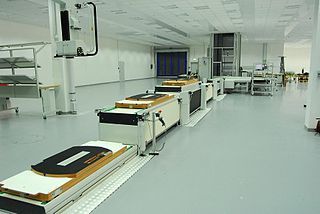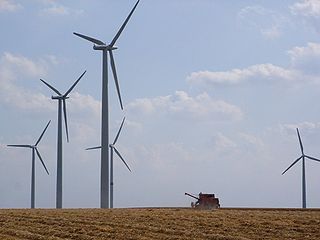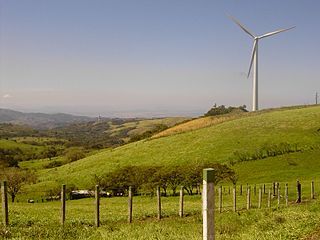From Machine Design: New Device for Extracting Energy from Wind
Here’s a renewable energy idea that frequent commenter Tim Kingston sent me. It doesn’t seem reasonable, but I thought I’d ask the physicists out there to comment. It’s a device that emits tiny droplets of water from electrical conductors (copper pipes with thousands of tiny holes?) that are placed in the wind. The droplets pick up electrical charge, and, when they’re blown away, cause the conductor to take on the opposite charge.
There is nothing theoretically impossible about this, and I love the concept that it doesn’t have moving parts that wear out. But the electrical field that is created (and thus the electrical energy that can be derived from it) comes from the kinetic energy of the wind. You’re not going to get more energy out of this than the theoretical maximum (as prescribed by Betz’ Law) regardless of what device you insert into the path of the wind. Am I not right? And how much of that total energy can be converted into blowing droplets off their pipes? I would think it would be a minute fraction. What am I missing?




 I want to thank the many people who have helped 2GreenEnergy along the way in our attempts to popularize the site. Though we have a great deal further to go, we’ve come a long way, and I’m grateful for all the support we’ve received.
I want to thank the many people who have helped 2GreenEnergy along the way in our attempts to popularize the site. Though we have a great deal further to go, we’ve come a long way, and I’m grateful for all the support we’ve received.


 I occasionally like to write something purely for the 43% of 2GreenEnergy readers who reside outside the United States and may have difficulty understanding how profoundly broken our legal and political processes are here, or who may think I’m exaggerating when I discuss our government’s flagrant disregard for the clearly expressed will of the people it ostensibly represents. Previously
I occasionally like to write something purely for the 43% of 2GreenEnergy readers who reside outside the United States and may have difficulty understanding how profoundly broken our legal and political processes are here, or who may think I’m exaggerating when I discuss our government’s flagrant disregard for the clearly expressed will of the people it ostensibly represents. Previously 